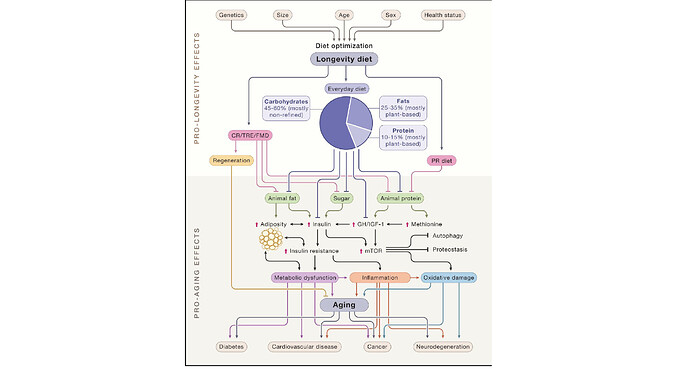The authors report that the key characteristics of the optimal diet appear to be moderate to high carbohydrate intake from non-refined sources, low but sufficient protein from largely plant-based sources, and enough plant-based fats to provide about 30 percent of energy needs. Ideally, the day’s meals would all occur within a window of 11-12 hours, allowing for a daily period of fasting, and a 5-day cycle of a fasting or fasting-mimicking diet every 3-4 months may also help reduce insulin resistance, blood pressure and other risk factors for individuals with increased disease risks, Longo added.
He described what eating for longevity could look like in real life: “Lots of legumes, whole grains, and vegetables; some fish; no red meat or processed meat and very low white meat; low sugar and refined grains; good levels of nuts and olive oil, and some dark chocolate.”
Summary
Diet as a whole, encompassing food composition, calorie intake, and the length and frequency of fasting periods, affects the time span in which health and functional capacity are maintained. Here, we analyze aging and nutrition studies in simple organisms, rodents, monkeys, and humans to link longevity to conserved growth and metabolic pathways and outline their role in aging and age-related disease. We focus on feasible nutritional strategies shown to delay aging and/or prevent diseases through epidemiological, model organism, clinical, and centenarian studies and underline the need to avoid malnourishment and frailty. These findings are integrated to define a longevity diet based on a multi-pillar approach adjusted for age and health status to optimize lifespan and healthspan in humans.
